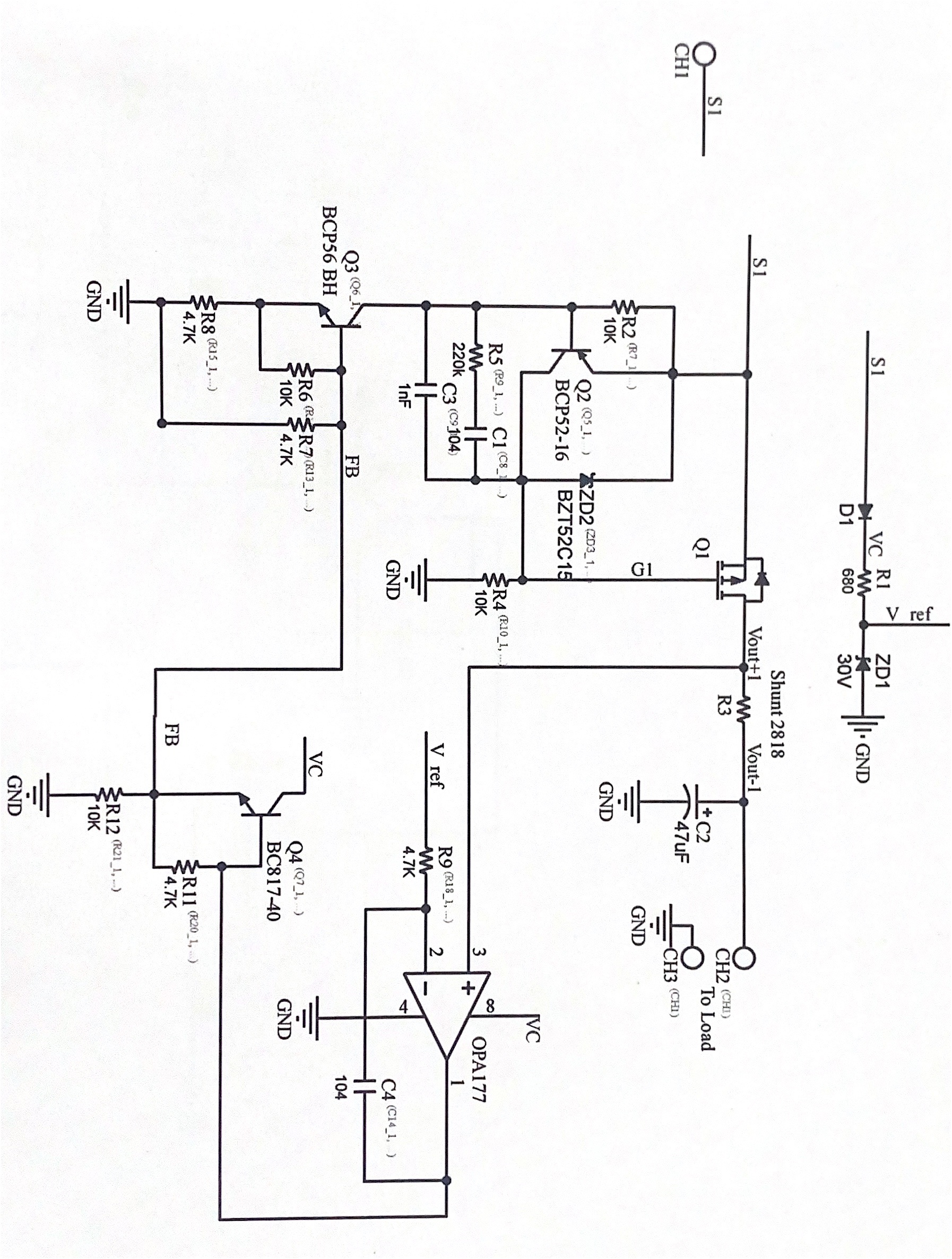Recently, I have been working on a circuit that requires an input voltage range of 28-33VDC, with the output voltage consistently maintained between 28-30VDC. I referenced circuit from the following link:
https://www.eetimes.com/clamping-circuit-tames-automotive-voltage-transients/
Instead of using a Zener diode at the output, I designed a voltage feedback loop using an op-amp (the schematic is attached below). Here are the results of this circuit:
- No Load Condition: With an input voltage ranging from 30.5-33V, the output voltage performs well, clamping at 30V with no ripple, when the input voltage is below 30V, the output voltage changes according to the input voltage without clamping. However, unfortunately, in the range of 30-30.5V input, the output voltage exhibits ripple (upto 700mV pk-pk).
- Loaded Condition (>3A): Similar to the no-load condition, but the region where ripple occurs is larger (from 30-31V input).
I have tried changing the values of the output capacitor and the compensation capacitors, but the situation has not improved significantly.
Could anyone spare some time to help me?
Thanks

